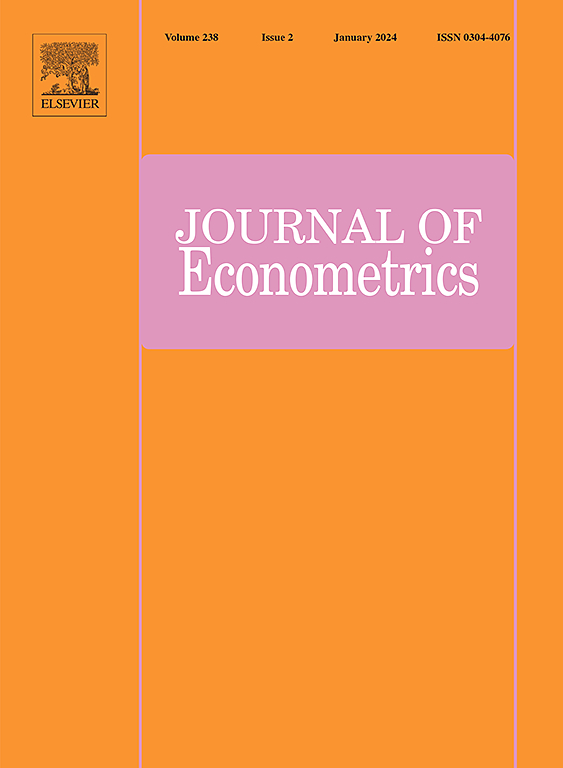When structural break meets threshold effect: Factor analysis under structural instabilities
IF 9.9
3区 经济学
Q1 ECONOMICS
引用次数: 0
Abstract
Structural instability has been one of the central research questions in economics and finance over many decades. This paper systematically investigates structural instabilities in high dimensional factor models, which portray both structural breaks and threshold effects simultaneously. The observed high dimensional time series are concatenated at an unknown number of break points, while they are described by multiple threshold factor models that are heterogeneous between any two consecutive subsamples. Both joint and sequential procedures for estimating the break points are developed based on the second moment of the pseudo factor estimates that fully ignore the structural instabilities. In each separated subsample, the group Lasso approach recently proposed by Ma and Tu (2023b) is adopted to efficiently identify the threshold factor structure. An information criterion is further proposed to determine the number of break points, which also serves the purpose to distinguish the two types of instabilities. Theoretical properties of the proposed estimators are established, and their finite sample performance is evaluated in Monte Carlo simulations. An empirical application to the U.S. financial market dataset demonstrates the consequences when structural break meets threshold effect in factor analysis.
当结构断裂满足阈值效应时:结构不稳定下的因子分析
几十年来,结构不稳定性一直是经济学和金融学的核心研究问题之一。本文系统地研究了同时描述结构断裂和阈值效应的高维因子模型中的结构失稳问题。观察到的高维时间序列在未知数量的断点处串联,而它们由多个阈值因子模型描述,这些模型在任意两个连续的子样本之间是异构的。基于完全忽略结构不稳定性的伪因子估计的第二矩,开发了估计断点的联合程序和顺序程序。在每个分离的子样本中,采用Ma和Tu (2023b)最近提出的组Lasso方法有效地识别阈值因子结构。在此基础上,提出了一种确定断点数目的信息准则,用以区分两种不稳定类型。建立了该估计器的理论性质,并在蒙特卡罗仿真中对其有限样本性能进行了评价。对美国金融市场数据集的实证应用表明,在因子分析中,结构性断裂满足阈值效应时的后果。
本文章由计算机程序翻译,如有差异,请以英文原文为准。
求助全文
约1分钟内获得全文
求助全文
来源期刊

Journal of Econometrics
社会科学-数学跨学科应用
CiteScore
8.60
自引率
1.60%
发文量
220
审稿时长
3-8 weeks
期刊介绍:
The Journal of Econometrics serves as an outlet for important, high quality, new research in both theoretical and applied econometrics. The scope of the Journal includes papers dealing with identification, estimation, testing, decision, and prediction issues encountered in economic research. Classical Bayesian statistics, and machine learning methods, are decidedly within the range of the Journal''s interests. The Annals of Econometrics is a supplement to the Journal of Econometrics.
 求助内容:
求助内容: 应助结果提醒方式:
应助结果提醒方式:


